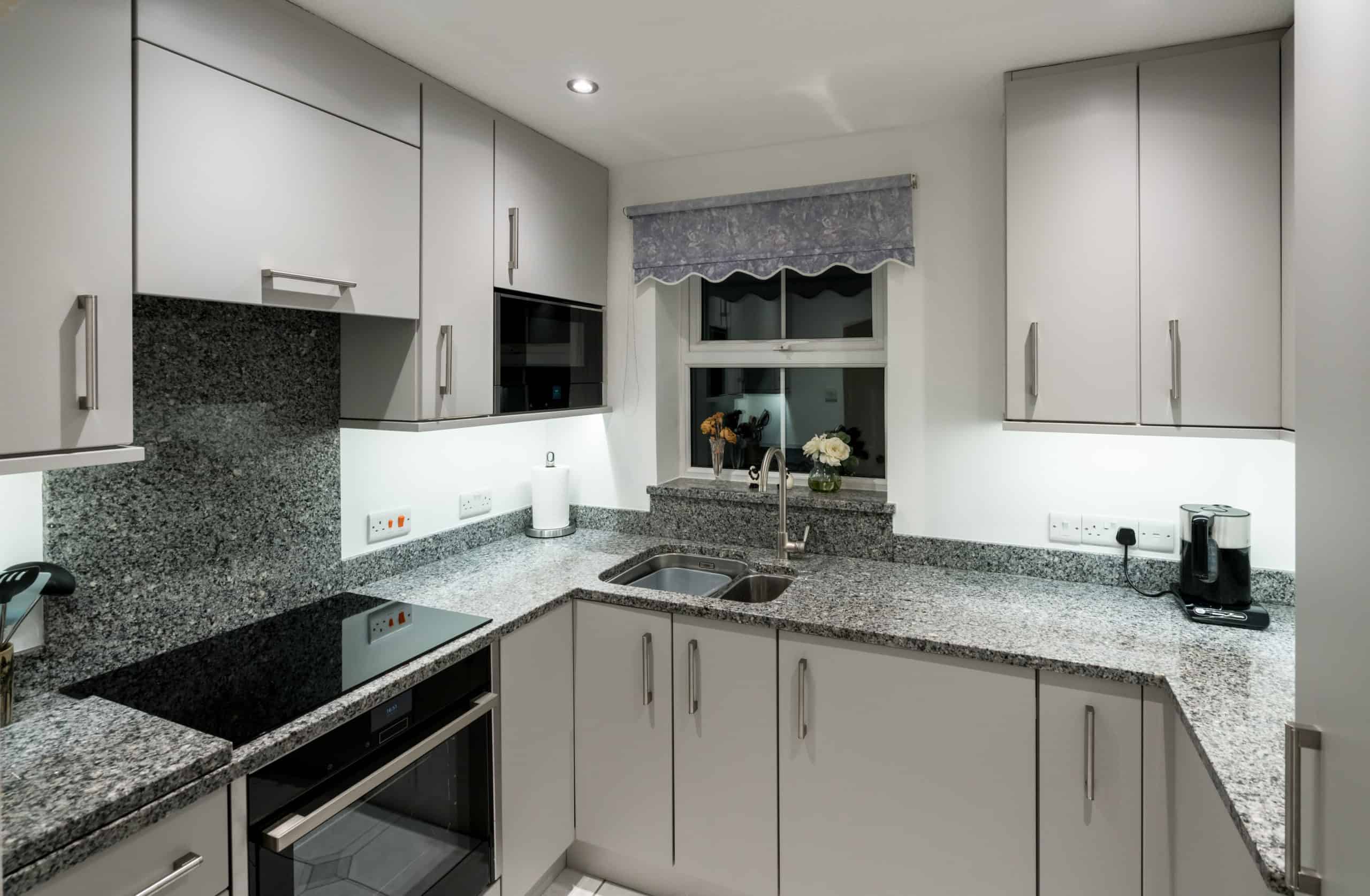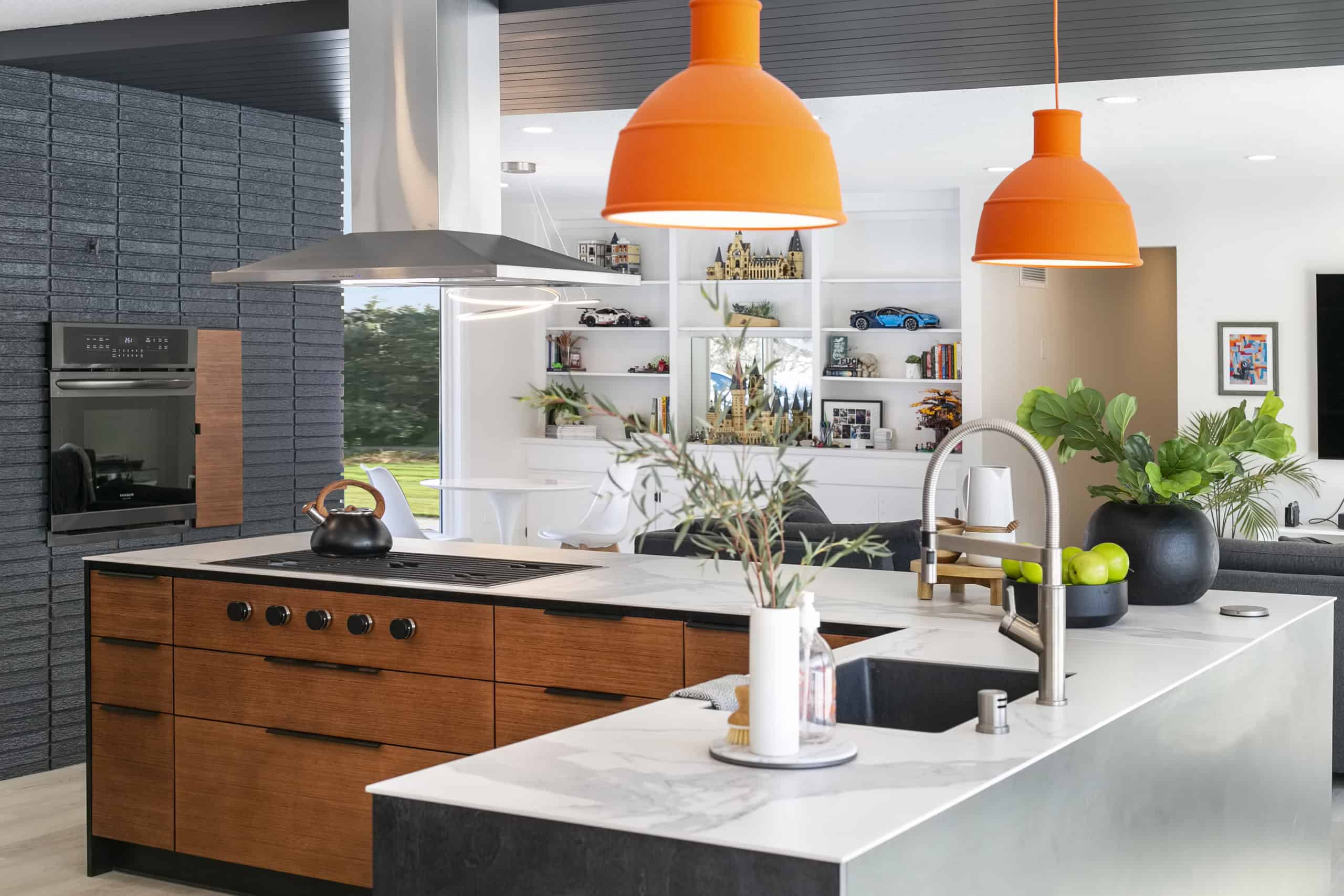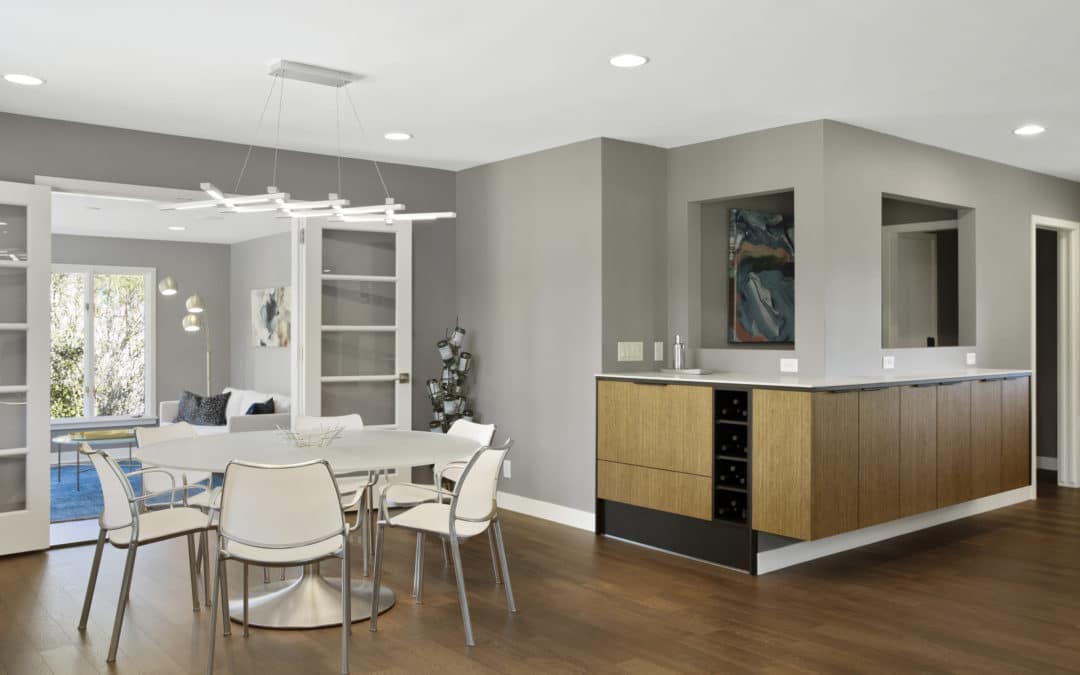Coming up with the design for your new kitchen is a blast! There is cabinetry to choose from, backsplashes to try out, appliances to purchase, paint colors to choose, and much more. Sure, it can be overwhelming at first, but with the right designer by your side, crafting your new kitchen should be fun and relatively stress-free.
However, what can be stressful is when you finish your new kitchen and see that the design maybe wasn’t the best. At that point, you’ll have to decide if the kitchen design mistake is something you want to live with or if it’s worth doing a partial tear-down to make it right.
For this reason, it’s important to carefully plan out your kitchen design and that you work with an experienced and talented design team to get it right the first time.
To help you get started—and to avoid any detrimental kitchen design mistakes—here are 5 common errors people make when designing a new home kitchen.
Table of Contents
Not Enough Space
A cramped kitchen should be avoided at all costs. Not only do cramped kitchens lack aesthetic appeal, but their functionality is severely compromised. This doesn’t mean you need to tear into your living room to create a massive kitchen that can comfortably fit an entire family. Even kitchens that are limited in their square footage can still embrace the open concept style that is so popular today.
If you have limited space for your new kitchen, check out this helpful blog courtesy of Insinkerator. They break down 20 design tips for making a small kitchen look bigger. One of our personal favorite tips is opting to ditch the clutter and strive for a more minimalist feel. For example, only make sure that there are enough storage options so that you can put all your kitchen items and appliances away as opposed to leaving them out.
Even if you have a lot of space for your new kitchen, don’t get too overzealous with what features you include. A streamlined kitchen that isn’t overstuffed with fluff looks great and is extremely functional. And, as a golden rule, always try and get 4 feet of separation between cabinets and the kitchen island (if you plan on having one).

Not Carefully Planning Around Cabinets and Drawers
One of the biggest mistakes you can make is not putting enough thought into your cabinets and drawers. Cabinets and drawers can end up hitting walls or a kitchen island if you’re not careful. It may seem like this wouldn’t be a common occurrence, but it can happen if you’re not careful.
To avoid running into this issue, be intentional with your planning. Before you sign-off on a layout, think hard about how and where your cabinetry and drawers will open. Consider your fridge and dishwasher locations and how you’ll move through the space too. For example, try and avoid placing your fridge or cabinets in a location where it’s blocking an entryway if the door is open. Obviously, it’s not always possible to be perfect with this, but the less obstruction, the better.
Not Enough Space Between the Sink and the Oven
It’s a general rule of thumb that, when designing a kitchen, make sure you have enough space between the sink and the oven. This area of your countertop is typically reserved for preparing food. Ignoring this will mean your final design will leave little room for cooking and serving food.
Make sure to prioritize this space early on in the design process, so you don’t forget about it. Mistakes in functionality can be much more difficult to remedy than aesthetics ones.

Using a Kitchen Island When It May Not Be Necessary
We get it, including an island in your kitchen design may seem like a great idea, but make sure it’s absolutely necessary. Islands can take up the bulk of a kitchen space. If you believe you’ll use it enough and it doesn’t shrink your kitchen down too much, then go for it! But, keep in mind that it is always easier to add a kitchen island than to take one out.
There are also other ways to fill the space if you don’t want a full-on open-concept kitchen layout. For example, a kitchen table doesn’t feel quite as big of a feature and will almost certainly be used.
A Lack of Natural Lighting
Most often, we think of natural lighting as being important for living rooms. But, incorporating natural, organic lighting is a great idea for your kitchen design as well. An over-reliance on artificial lighting can sometimes dampen the mood of a kitchen and make it look, well, artificial.
Sometimes, adding natural light to a kitchen may not be possible if adding a window isn’t within your budget. But, if you have some leftover budget after your initial kitchen design, see if you have some room to add another window. Need some inspiration for how to work in more natural light? Take a look at these kitchens from Architectural Digest.
Not Knowing How Long Cabinets Last
Despite how often they are used, cabinets in your kitchen can last up to 50 years. As with many components in your home, the more high-end cabinets will last much longer than low-end options. Another factor that contributes to the longevity of a set of cabinets is the material they are made of. If you are looking for cabinets that will last you 50 years and potentially beyond, choose a hardwood. They are more likely to resist scratches and dents when compared to other materials. Taking good care of your cabinets will also help them last longer. For example, avoiding water damage is key to ensuring you get the most out of cabinets.
Why Puustelli Cabinetry is the Right Choice
If you are looking for a new set of cabinets for your dream kitchen, take a look at Puustelli’s Miinus kitchen concept. Our authentic Scandinavian is rooted in a deep 100-year history and has revolutionized the modern kitchen. During the course of all these years, we’ve been delivering high-quality, gorgeous, and modern kitchen cabinets for our clients (see our gallery).
But our cabinets aren’t only beautiful, they are also eco-friendly and sustainable. We’ve established data-driven ecological production methods and chosen the most ecological, healthy, and sustainable materials to ensure our kitchens are safe for your family and the environment.

Final Thoughts
If you want to avoid any mistakes with your kitchen design, our last parting advice is just be thorough during the design process. Taking the time necessary to ensure your new kitchen will be perfect will be worth it in the long run.

